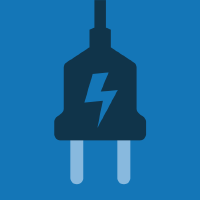Topic Editors

Control and Optimization of Networked Microgrids
Topic Information
Dear Colleagues,
The microgrid, as an indispensable part of the smart grid, has received dramatically increasing attention during the past three decades. With prosperous development in distributed generations, the microgrid has been deemed to be an effective solution for future energy systems due to its prominent role in the accommodation of intermittent renewable energy. In particular, networked microgrids have emerged in recent years due to their capability to counteract the strong volatility of new energy, remain stable and provide optimal operation due to mutual support between multiple adjacent subgrids. Control and optimization are the most significant technologies in the operation of networked microgrids. The control and optimization of networked microgrids not only require the source–load coordination inside each subgrid, but also demand the coordinated interaction between multiple subgrids. This is extremely difficult when a large amount of subgrids are participating, which is becoming inevitable for future energy systems. This topic aims to collect the latest developments in the control and optimization of networked microgrids. We are pleased to invite the research community to submit their contributions on the following topics which include, but are not limited to, the following:
- Distributed/decentralized control of networked microgrids;
- Stability analysis of networked microgrids with renewable energy resources;
- Distributed/decentralized energy management of networked microgrids;
- Control and optimization of AC/DC microgrid;
- Cyber-physical networked microgrids;
- Energy trading of networked microgrids;
- Integrated energy systems;
- Virtual power plant considering networked microgrids;
- AI application in networked microgrids;
- Demonstrated projects regarding networked microgrids.
Prof. Dr. Miao Yu
Dr. Zhejing Bao
Topic Editors
Keywords
- networked microgrids
- multiple microgrids
- microgrid cluster
- AC/DC microgrid
- DC microgrid
- distributed generation
- renewable energy
- integrated energy system
- virtual power plant
- smart grid
Participating Journals
| Journal Name | Impact Factor | CiteScore | Launched Year | First Decision (median) | APC | |
|---|---|---|---|---|---|---|

Electricity
|
- | - | 2020 | 20.3 Days | CHF 1000 | Submit |

Electronics
|
2.9 | 4.7 | 2012 | 15.6 Days | CHF 2400 | Submit |

Energies
|
3.2 | 5.5 | 2008 | 16.1 Days | CHF 2600 | Submit |

Journal of Low Power Electronics and Applications
|
2.1 | 3.1 | 2011 | 22.2 Days | CHF 1800 | Submit |

Sensors
|
3.9 | 6.8 | 2001 | 17 Days | CHF 2600 | Submit |

Automation
|
- | - | 2020 | 26.3 Days | CHF 1000 | Submit |

MDPI Topics is cooperating with Preprints.org and has built a direct connection between MDPI journals and Preprints.org. Authors are encouraged to enjoy the benefits by posting a preprint at Preprints.org prior to publication:
- Immediately share your ideas ahead of publication and establish your research priority;
- Protect your idea from being stolen with this time-stamped preprint article;
- Enhance the exposure and impact of your research;
- Receive feedback from your peers in advance;
- Have it indexed in Web of Science (Preprint Citation Index), Google Scholar, Crossref, SHARE, PrePubMed, Scilit and Europe PMC.


